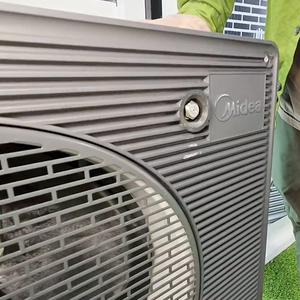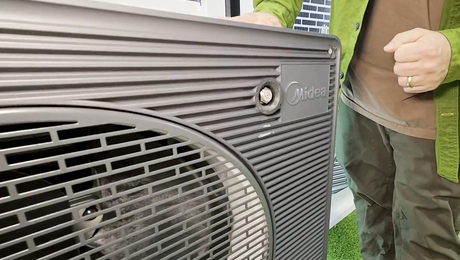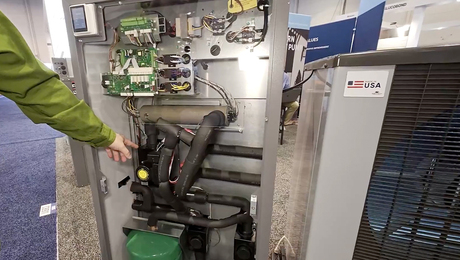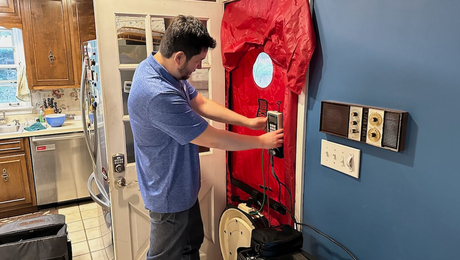Old House Air-Sealing Basics
Look high and low to find and plug air leaks that cost you money and comfort.

While you might think that air leaks are a problem only with older houses, we’ve tested old homes that are pretty airtight and brand-new homes that leak lots of air. Air leaks occur wherever there is a joint, gap, or hole in the rigid building materials that enclose a house, such as wall sheathing, framing, and drywall. Making an existing house more airtight is pretty straightforward: Find the holes and seal them up. Many air leaks can be found just by looking for spaces between framing and chimneys, electric boxes and drywall, and the mudsill and foundation.
Contact an asbestos abatement specialist before doing any air-sealing if you have vermiculate insulation in the walls or otherwise suspect that there may be asbestos in the house.
Why Air-Sealing?
The fixes are often simple and use common materials—rigid foam, caulk, acoustical sealant, and spray foam—selected based on the hole size and surrounding materials. Energy savings usually pay for the cost of air-sealing within a few years—almost immediately if you do the work yourself.
Air-sealing keeps conditioned air inside and improves the performance of insulation by stopping air from moving through it. Air-sealing reduces the possibility of condensation developing in building cavities, which can lead to mold and decay.
It’s also a first step to adding fibrous insulation to an attic in a cold climate: This type of insulation alone does not prevent warm, moist air from escaping the living space. Finally, air-sealing can block gasoline or CO fumes from an attached garage, or moldy air from a crawlspace. Air-sealing makes it important to vent bath exhaust fans and clothes dryers to the outside.
Air moves in and out due to pressure differences between inside and outside. Three forces driving pressure differences are the stack effect, wind, and mechanical fans. Although wind and fans may be important drivers in warmer climates, the stack effect is often the dominant cause of air leaks in heating climates. The stack effect happens when warm air rises and escapes through holes high in the house, much like a chimney. Although it’s a weak force, it operates constantly, so it can account for a lot of air movement and energy loss.
Determine Your Air Barrier
Start by deciding which building planes to use as air barriers. This might be the exterior sheathing, subfloor, or drywall. One way to visualize the air barrier is to look at a section drawing of the house and find a continuous line that encloses the living quarters. The insulation should directly contact the air barrier.
Generally the air barrier is the drywall or sheathing along the exterior walls, the top-floor ceiling or roofline, and either the foundation wall and slab or the first-floor sheathing. Once you’ve identified the air barrier, look for leaks in it and seal them, starting with the biggest in the attic and crawlspace or basement.
Finding the Holes
Although a visual inspection can find leaks, it’s easier to pinpoint them by pressurizing or depressurizing the house and feeling for drafts with your hand or using a handheld smoke puffer. Smoke moves toward a hole if the house is being pressurized, or away from a hole if the house is being depressurized. It’s better to pressurize the house when using smoke inside, and to depressurize when using smoke outside the living space.
Professionals use a blower door, which combines a high-capacity fan with a fabric-covered frame that fits in an exterior doorway. A manometer attached to the fan measures the air-leakage rate to predict its performance or determine rates of leakage and assess air-sealing work.
Blower doors cost about $4,650, though, and aren’t commonly available to rent. You can sometimes depressurize a house enough to find air leaks by turning on the exhaust fans, central vacuum, and clothes dryer all at once. In very leaky houses, that may not create a noticeable pressure difference. Another option is a powerful (5,000 to 10,000 cfm) drum fan. One can be had for under $150 and can be fit into a piece of plywood that mounts to a door or window, creating a homemade blower door.
Close all windows, doors, chimney dampers, and attic hatches to maximize the pressure difference. Exhausting air may suck air down chimneys, so turn off combustion appliances such as gas ranges, furnaces, boilers, water heaters, and dryers. Make sure that fireplaces or woodstoves have been out for 24 hours. Clean ashes out of the firebox to avoid sucking them into the house. Wash potentially lead-contaminated dust from around windows in pre-1978 houses. Remember to turn appliances on and relight pilot flames when the work is done.
The Path to a Tighter House
How Houses Leak AirWarm air rises, creating a zone of higher pressure at the top of a house that forces air out of any hole it can find. This escaping air creates a zone of lower pressure at the bottom of the house that sucks in air through holes and cracks. This is the stack effect. Sealing leaks at the top and bottom of the house is the most effective approach for stopping it. The colder it is outside, the stronger the stack effect, so air-sealing can have a big impact in cold climates (zones 4 to 8) and a lesser one in mixed climates (zone 3). It is not as important in warm climates (zones 1 and 2). |
 |
Two Tools for Finding Air Leaks
 |
 |
Three Materials for Stopping Air Leaks
1.) RTV Silicone: High-temperature RTV silicone sealant can handle temperatures up to 600°F. It’s more flexible than fireblock sealant, so i’s a good choice for use around chimneys and exhaust ducts. It’s available in 3-oz. squeeze tubes and gunnable 10-oz. tubes at hardware stores and online sellers.

2.) Acoustical Sealant: Meant for soundproofing, acoustical sealant never hardens, and it accommodates the normal movement of building materials without cracking. You might have to go to a commercial drywall supplier to find it.
3.) Spray Foam: Ranging in price from about $20 to over $100, foam guns make applying spray foam easy. Cans of foam for guns come in several varieties, from minimal-expanding for use around doors and windows to gap-filling for higher-volume applications. It’s widely available online and at lumberyards and home centers.
Seal the Basement Walls
Whether to seal the foundation walls and slab or the subfloor above depends on factors unique to each house. When the basement is conditioned, the foundation walls and slab must be sealed because even though they are underground, air still can leak through the soil. If there are insulated foundation walls or ducts in the crawlspace or basement, use the wall and slab as the air barrier.
If the subfloor consists of lumber planks, which leak a lot of air, it’s probably easier to seal the foundation walls and slab. Bulkhead doors to the outside are big leaks, but it still might be easier to install a weatherstripped and insulated door at the bottom of the stairs than to seal the subfloor above.
 |
 |
 |
 |
 |
 |
Or the Basement Ceiling
Use the first-floor subfloor as the air barrier if it’s plywood or OSB, if the joist cavities are uninsulated, and if there are few ducts in the basement or crawlspace. If the basement or crawlspace is damp, has dirt floors, or has walls built of unmortared stone, air-sealing the subfloor helps control moisture. In houses with those issues and leaky board subflooring, seal the subfloor with several inches of spray foam. You may also need to dry out the foundation. In all cases, the door to the first floor requires weatherstripping.

 |
 |
 |
 |
Seal the Attic
In most homes, the drywall ceiling dividing the living space from the attic is the best air barrier at the top of the house. Seal leaks from above, and cover attic accesses such as stairs or scuttles with a foam box such as the Battic Door or ones available at home centers. We sometimes encounter ceilings covered with tongue-and-groove planks or acoustical tiles and no drywall behind them.
These ceilings are nearly impossible to air-seal, so it’s easier to seal these houses at the rafter plane by spraying a layer of foam against the underside of the roof and sealing off any attic ventilation. When there is no attic, such as with many sloped ceilings, the drywall still can be used as the air-control layer, but air leaks have to be sealed from inside the living space.
 |
 |
 |
 |
 |
 |
 |
 |
Can You Make a House Too Tight?

After air-sealing, have a knowledgeable HVAC technician or energy specialist make sure that your house has enough fresh air for your combustion appliances. Air-sealing can tighten a house to the point where combustion appliances don’t receive enough makeup air to perform well. Atmospheric combustion appliances can be a health hazard in a tight house.
The exhaust gases from a fireplace, woodstove, furnace, or water heater can be sucked down the flue by exhaust fans. Combustion appliances, or the area they operate in, should be outfitted with air intakes ducted from the outside. Broan makes a motorized damper that can be wired to open when the boiler or furnace fires, providing combustion air when needed while otherwise keeping outside air where it belongs. Intake ducts can connect directly to the burner on some models.
Tight houses can suffer from poor indoor-air quality if water vapor, VOCs, CO2, and odors build up. You may need mechanical ventilation to bring in fresh air and exhaust stale air. In a balanced ventilation system, fans draw in and exhaust air at the same rate. An improvement to a basic balanced ventilation system is to use an energy-recovery ventilator (ERV) or a heat-recovery ventilator (HRV), both of which transfer a large percentage of the energy from the air being exhausted to the incoming fresh air.
— Mike Guertin; contractor in East Greenwich, R.I. Rob Sherwood; senior project manager with CLEAResult, an energy-efficiency consultant. Photos by Andy Engel, except where noted.
RELATED STORIES


























